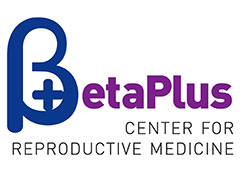If a weight loss fails or in cases of non-obese patients, the drug of choice for ovulation induction in patients with no ovulation is chlomiphene citrate (CC). It induces ovulation in 70-85% of patients, although only 40-50% of them manage to conceive. Total pregnancy rate after 12 cycles where clomiphene was used is up to 80%
In the last several years letrozole, an aromatase inhibitor (the medicine that lowers the level of estrogens in the body) was shown to be an excellent choice in ovulation induction, especially in women with idiopathic infertility, or PCOS. It appears that letrozole has higher live birth rate compared to clomiphene, without the serious side effects. Also, letrozole does not have a negative effect on the endometrium as does clomiphene.
Ovulation induction with clomiphene starts with 50 mg daily over a period of 5 days (the start is between third and fifth days of the cycle) which in almost 50% of patients induces ovulation. As 50% women fail to ovulate, it is more likely to start with a 100 mg daily dosage (two pills daily, both taken immediately). In exceptional cases, with very sensitive women, the initial dosage can be 25 mg daily. Ultrasound monitoring is obligatory for at least one cycle until the ovarian response is determined, i.e. if ovulation occurs and if uterine lining starts thinning.
Clomiphene is usually taken for 5 days, although there are more recent Japanese papers suggesting clomiphene should be taken until ovulation.
Clomiphene dosage can be elevated up to 150 mg daily, exceptionally to 250 mg daily, a top limit of clinical efficiency. Induction can be used throughout 3-6 cycles – three in cases of antiestogenic effects (thin uterine lining) when pregnancy is unlikely, six if a woman ovulates. If conception is still failing after 3 months, further stimulation without intrauterine insemination (IUI) is futile. Furthermore hCG injection inducing ovulation is rarely required as ovulation occurs without applying it. Induction should not be continued after 6 months.
As clomiphene has been on the market for a long time, we are well aware of advantages and disadvantages of this type of treatment. Clomiphene does induce ovulation in a significant number of patients, however a large number of them fail to conceive. Reasons may be elevated LH, antiestrogenic effects (thin uterine lining, changes in cervical mucus) and poor influence to eggs. Furthermore, 10-30% patients will be resistant (fail to ovulate) to clomiphene after 6 months of treatment. Clomiphene is also associated with a high rate of miscarriages. Problems also include multiple pregnancies as incidence of quintuplets is several million times higher than in natural conception, which additionally emphasizes the need for ultrasound monitoring. If a woman reacts to the treatment with multiple follicles it is better to refrain from a timed intercourse for the period, and then lower the clomiphene dosage the following month.
Treating clomiphene resistance is arguable as there are many other drugs and drug combinations available to induce ovulation.
Clomiphene + Glucocorticoid
It is believed that women suffering from hyperandrogenism and receiving clomiphene treatment should also be given glucocorticoid while attempting to induce ovulation. These drugs belong to corticoids, but in small dosages they have been successfully used for quite some time in treating ovulation disorders. Women suffering from hyperandrogenism usually also suffer from excessive hairiness and/or acne, but the main criteria for applying the above drugs is elevated levels of hormone didehydroepiandroandrosterone sulphate (DHEA-s).
If DHEA-s is higher than 2 mg/mL, in ovulation induction clomiphene can be supplemented with Dexamethason 0.25-0.50 mg, or pronisone 5-10 mg. They are given in both stages of the cycle. Glucocorticoid increases synthesis and secretion of follicle stimulating hormone (FSH), but predominantly decreases secretion of male sex hormones, so total androgens drop by 40%. This leads to more quality ovulation, and it is effective with hyperandrogenous women, even when DHEA-s level is normal.
Most papers whose authors used glucocorticoid in ovulation induction agree that ovulation occurs in 80-100%. Pregnancy rate is also satisfactory, between 40 and 80%. We should point out that this refers to women who had undergone 3 cycles of treatment with clomiphene only and failed to ovulate.
Clomiphene + Metformin
The other drug rather frequently used in ovulation induction is metformin. For a long time this drug has been in use in treating diabetic population with non-insulin dependant diabetes and only after insulin importance was discovered in the development of polycystic ovarian syndrome it has been in use in ovarian induction treatments for women with PCOS.
The addition of metformin to clomiphene significantly increases chances for pregnancy in women who previously showed clomiphene resistance. Chances of pregnancy in women using the drug combination and women using clomiphene-only treatments are 4.41 and 3.65, respectively. Therefore when it comes to women with clomiphene resistance, metformin should be introduced into their treatment after 3 months. Meta-analysis from 2003 showed that a combination of clomiphene and metformin results in 56% ovulation as opposed to 35% in a clomiphene/placebo group. Women with insulin resistance (IR) are otherwise more likely to be resistant to clomiphene, although there have not been sufficient studies to confirm that they react better to metformin than for example clomiphene-resistant hyperandrogenic women. Furthermore it is not quite clear if thin women with PCOS with normal insulin resistance react to metformin since some recent studies have showed they seem to react.




